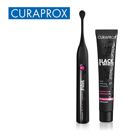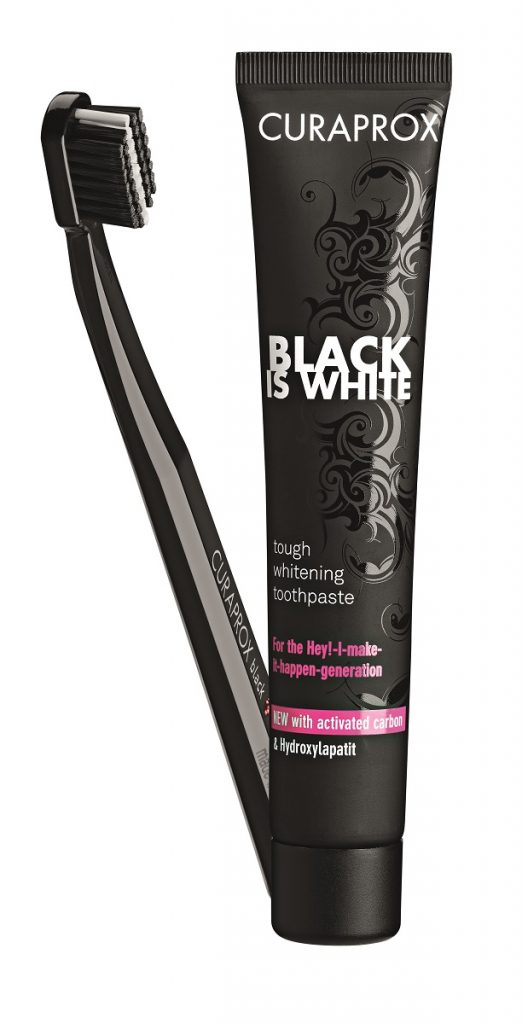The value of whitening toothpastes – Howard thomas
Featured Products Promotional FeaturesPosted by: Dental Design 12th September 2018

These days, it is not uncommon to come across a news article in the mainstream media about tooth whitening, reporting on yet another illegal whitening scandal or the latest DIY fad. This coverage serves as a reminder that whitening remains at the forefront of consumers’ interests, and is exactly why the provision of safe and effective solutions must continue to be a leading priority for the profession.
One of the most recent stories that stood out was the recent ruling by the Advertising Standards Authority (ASA) to ban adverts about whitening toothpastes that have been deemed to be misleading. Admittedly, there have been cases in the past questioning whether claims by manufacturers should be believed, but the re-emergence of these concerns has reignited the debate about the effectiveness of whitening toothpastes.
For patients that rely on the media for their intelligence on whitening products such stories can be disconcerting and there is the risk that they may turn to alternative measures. In some instances that may mean in-surgery solutions or professional home kits, but others may resort to cheaper and unsafe pathways such as DIY methods, which are unproven and a danger to patients’ dental health.
Formulas that use natural ingredients such as strawberries, baking soda and lemons are particularly dangerous as they can reduce the surface hardness of teeth and erode the enamel if used frequently – which the chances are they would be. After all, the reason why patients use whitening toothpastes in the first place is because they are a cost effective solution that can be used daily on an ongoing basis. Whitening may be popular with those that want to improve their smile and boost their confidence, but not everyone can afford professional treatment, and that’s ultimately why toothpastes have historically been the whitening product of choice for many. If, then, patients make the switch to a DIY formula that they consider to be an everyday economic alternative if they no longer feel like whitening toothpaste is an option, they will be at real risk of damaging their oral health. Should this happen, the profession could end up with an even bigger problem on its hands.
To ensure this doesn’t happen it might be worth taking the time to remind patients about the dangers of DIY methods and the benefits of using toothpastes that can make teeth appear whiter. Equally, be upfront about the limitations of whitening toothpastes compared to professional whitening and be realistic with patients about the sorts of results they can expect. That way they have all the information to make an informed decision – and are far more likely to avoid any risky solutions that will do more harm then good. Whitening toothpastes might not intrinsically be able to whiten teeth, but they are capable of reducing extrinsic surface staining and improving the brightness. That’s usually enough for most patients. After all, discolouration caused by smoking, certain foods and drinks such as red wine, tea and coffee can make teeth appear much darker so as soon as they’re removed, the teeth naturally look much whiter.
As you would expect, however, some products are far more effective than others and much gentler so caution must be taken when recommending whitening toothpastes to patients. Products that contain higher amounts of abrasives such as chalk or pumice and chemical agents like peroxide are generally less preferable as they can wear away tooth enamel and make the dentine appear more visible. Products that use more natural ingredients, on the other hand, can help to achieve similar results without causing damage.
One example is the Curaprox Black Is White toothpaste with activated carbon. Using its absorption qualities to remove stains caused by tannins without locking on to vital minerals, the activated carbon toothpaste is able to achieve a whiter looking smile without compromising the integrity of tooth enamel. It also uses hydroxylapatite to form a thin film over the enamel and a physical blue filter to make the teeth appear optically whiter. There’s also the new Be You range of whitening toothpastes available from Curaprox, which boasts a double whitening effect that’s both gentle and natural for a more dazzling, confident smile.
The debate around certain manufacturer’s ability to deliver on their promises about their products will likely continue, but there can be no doubt that whitening toothpastes have a place in being able to remove stains and make the teeth cleaner and brighter. If your patients are interested in whitening but don’t want the price tag of in-house solutions, be sure to provide all the appropriate information alongside safe and effective products that don’t abrade or bleach teeth. Hopefully then, they won’t turn to unproven or dangerous methods that will do more harm than good.
For more information please call 01480 862084, email info@curaprox.co.uk
or visit www.curaprox.co.uk













